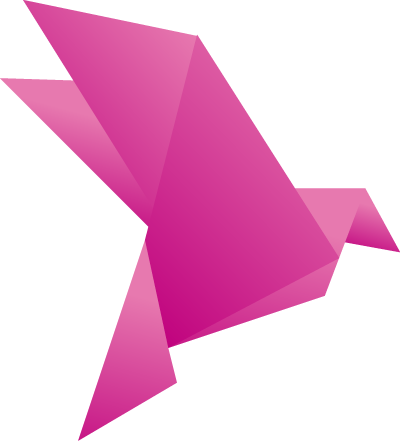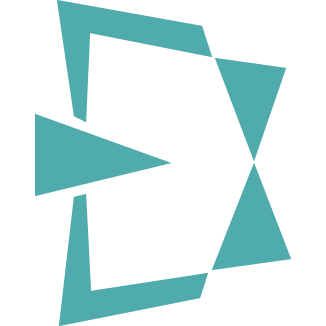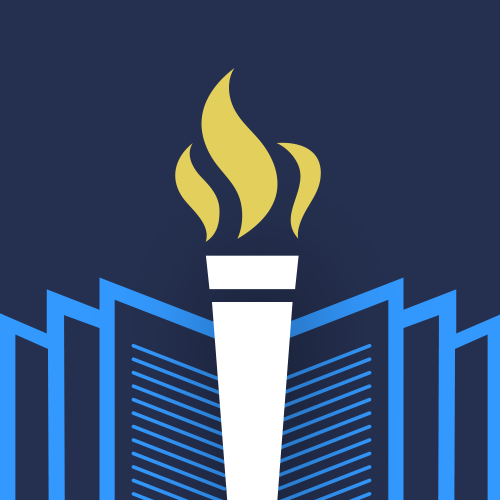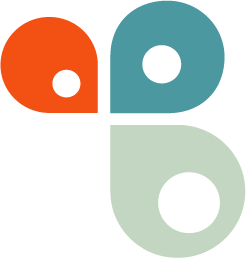A few of my favorite things
I’ve been a software designer and engineer for many years, I’ve founded two companies and a political volunteer organization, and raised three children.
Here are the personal and professional projects I’ve most enjoyed, in rough reverse-chronological order:
Web Origami

I’m quite happy with the progression of my current project, Web Origami, a programming language, conceptual framework, and set of tools for creating content. I’m specifically interested in helping people create websites and other artifacts without having to depend on large corporate platforms and the costs and restrictions those impose. Origami gets a great deal of mileage from a very small set of core ideas, and I enjoy refining and promoting those.
Japan traverse
I spent a month hiking across Japan, crossing the main island of Honshu from the Pacific Ocean to the Sea of Japan. My route took me over steep mountains in a number of national parks, including Mt. Fuji, and portions of the Southern Alps, Yatsugatake, the Northern Alps, and the Shio no Michi Trail. In between, I walked through cities, towns, and rural areas. I made a little ebook about the experience.
Emojese
🖼️💬
I think emoji will someday evolve into a global written pidgin language, and I thought it’d be interesting to try to speed up that process by creating Emojese, a tool for expressing complex thoughts entirely in emoji and other Unicode glyphs. I think it’s fun to play with.
Elix

At my second startup, I developed the Elix web component library, an open collection of high-quality web components for common user interface patterns. My goal was to consolidate a career’s worth of experience refining the details of user interface controls into a shareable library of readily reusable components. Working on Elix led me to appreciate the value of building as close to the underlying platform as possible. In a presentation I gave at Microsoft, I packed a decade of work into a single, comprehensive talk about Elix.
Eastside Traverse
I like to backpack in Washington State. I’ve hiked the Pacific Crest Trail across Washington, and have been section-hiking Washington’s portion of the Pacific Northwest Trail. One day I was looking at maps of the smaller mountains between Seattle and the Cascades, and realized that I could probably stitch together a pretty good hiking route between my own house and the Pacific Crest Trail at Snoqualmie Pass. It was challenging (75 miles over three days, though the real killer proved to be 17,000+ feet of elevation gain) and ultimately exhilarating to walk out my front door and then step on the PCT a few days later. The Washington Trails Association, an organization I’m proud to support, wrote an article about my hike to highlight the value of an extensive trail network.
Presterity

My disappointment with the 2016 U.S. presidential election let me to form Presterity.org, a collective effort to document the abuses of the Trump administration. A group of wonderful people joined this effort, and I was proud of what we were able to pull together in a short time. I gave an interview on KUOW, my local NPR affiliate, about the project.
The HTML <slot> element
For some years I participated in the WHATWG web apps working group, an experience that led me to appreciate the enormous work that goes on year after year to ensure that the web remains a dynamic place — but in a backward-compatible way. I helped Apple and Google resolve their disagreements on fundamental points that had threatened to derail the adoption of web components, a story I wrote up in A history of the HTML <slot> element.
Hiking pole scale
When I started long-distance hiking, I liked cooking with gas stoves but was unnerved by an inability to accurately gauge how much fuel was left in them. This makes for an interesting puzzle: how can you measure the gas in a can using only the stuff you already bring on a hike? It turns out to be possible to Accurately measure the camping stove fuel in a gas can with a hiking pole.
Printable wall calendar
I designed a compact, minimalist paper wall calendar that was extremely helpful in facilitating team planning discussions. I found it very useful for daily reference too, and always keep two of these calendars by my desk: one for the current year, one for the next.
Home science and engineering projects
When my kids were young I enjoyed coming up with science and engineering projects at home. Active parenting requires a colossal amount of energy, so most days we just cycled through more mundane activities, but when inspiration struck it was immensely fun to do something creative and hands-on with the materials we had around us.
The Bead Tree
For many years I drove my kids to school in a carpool with another family’s children. A discussion of how movies get made led to the idea: “Let’s make a movie!”. Over a series of subsequent get-togethers, I led the kids through various aspects of filmmaking, culminating in The Bead Tree. I suggested we record the audio separately from the video, which resulted in me spending many nights editing the final result. I was particularly happy with how my eldest’s piano piece pulled everything together.
Family journal and newsletter
When our first child was born, my wife and I began jotting down little notes and stories that evolved into a family journal we’ve now maintained for many years. It’s become a critical part of how I remember the events of our lives. Our journal site generates a monthly email newsletter, and each December I consolidate the year’s journal stories into a holiday letter. Those things play important roles in keeping us connected with friends and family members. I encourage people to journal in any fashion they can manage — writing a few words down can make the difference between keeping a fond memory alive and letting it slip into oblivion.
Collage screen saver
When designing an early prototype for Cozi (below), I created a photo screen saver that generated collages from folders of photos. Generated collages turn out to be far more visually compelling than a single photo at a time, and even a random collection of photos from an event can still tell an interesting story about that event. For many years successive revisions of this screen saver have been the visual centerpiece of my family’s main living area. It never fails to captivate visitors, and on a daily basis it continues to remind my family members of fun times we’ve had together. I wish I could turn the screen saver into a product so that other people could enjoy it, but sadly this is the kind of software art that people will love but not pay for.
A related personal project of mine produced MaxSquare, a simple and efficient algorithm for choosing image thumbnail sizes that I believe could find wide use in photo tools.
Cozi

I co-founded Cozi in 2005 with the idea of letting families use software to orchestrate their busy lives. At the time, no one had mobile phones, and web apps weren’t a thing yet, so the use of tech at home was largely confined to office-style work. I interviewed countless people in their homes about what they needed help with, and from the beginning, it was clear families were eager for better tools to coordinate with each other and stay on top of daily activities. We created a family calendar that worked the way families do, and families loved it. It was a wonderful design challenge, some of which I covered in a series of calendar design changes in 2008. Cozi was acquired a long time ago, and in my opinion its design has since been substantially degraded, but I still occasionally meet families that use Cozi or remember it fondly. Nearly 20 years later, there is still no mainstream calendar that does half as good a job at helping families.
Puzzlehunts
Friends and I fielded a team for the 1995 edition of The Game, an elaborate semi-annual 24-hour puzzlehunt. Winning the following year conferred the dubious honor of being expected to host the next Game. We created a fictitious game show called “Hope2Die”, and the experience of designing the puzzles was enjoyable. My favorite puzzle was “Hope2Die Aerobics”, in which a group of players collectively synchronize their movements in order to generate the digits of a phone number. One player said, “I get that we were acting as components in a logic circuit, but what kind of sick mind combines electrical engineering with aerobics?”
I later created smaller-scale puzzlehunts for some of my children’s birthday parties, and they were all immensely fun for me, my kids, and their friends. One standout was “Professor Pete’s School for Sensitive Youngsters”, which combined whimsical humor with interesting puzzles and activities, all while teaching the kids that their bodies have many more than five senses.
Microsoft Money

My first role as a lead designer was on Microsoft Money, a personal finance app. I inherited a user interface design modeled after Microsoft Word and Excel, but I was allowed to completely redesign the entire UI to make something much easier to use and more appealing to consumers. I remember one of the engineers expressing the sentiment, “I don’t know how we’re going to pull this off, but I really want to do it.” Users became fans of the design, and we went on to create a series of releases that I feel genuinely helped ordinary people do a better job with the complex yet crucial task of stewarding their own finances.
During one Microsoft Money release I developed a general design strategy I called Inductive User Interface design which I think still holds relevance today.
Microsoft Mail

The first commercial software project I worked on was Microsoft Mail, an email app created at the dawn of mainstream corporate email adoption. I started as a program management intern in 1988, and eventually joined the company and worked on the project full time. I cut my teeth as a user interface designer on that project, and learned a great deal from my colleagues and our users.
Karel the Robot
In high school I wrote an interpreter for the Karel programming language so that teachers could use Richard Pattis’ book Karel the Robot: A Gentle Introduction to the Art of Programming in the school’s computer science classes. While I’d been programming for a few years at that point, I think the interpreter and accompanying editor constituted the first app I ever wrote that other people used.
The school had a connection to USENET, which was unusual for a high school at that time. I posted my Karel interpreter on the net.sources newsgroup, and some other schools picked up the interpreter for their own intro CS classes. Forty years later, I found my interpreter in a USENET archive and posted it on GitHub.
Metamorph
When I was 15, I took a filmmaking and animation class and created a short claymation film called Metamorph. My teacher encouraged me to submit to a state film festival and I was delighted the film won 1st prize in the high school division.